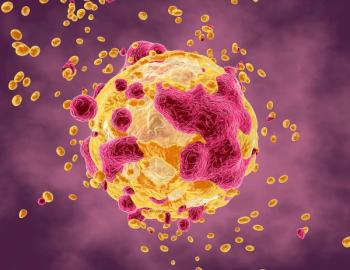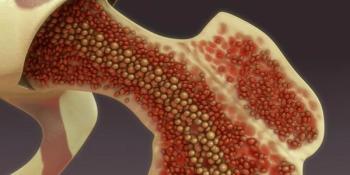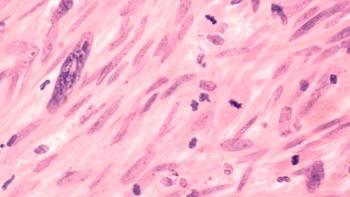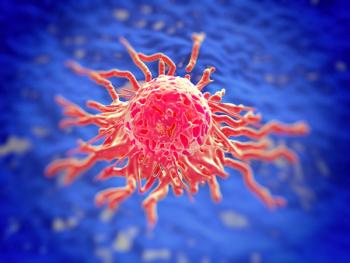
Increased Dose Frequency in Ewing’s Sarcoma Ups Event-Free Survival
Decreasing the time between cycles of standard chemotherapy for Ewing’s sarcoma from 3 weeks to 2 weeks increased event-free survival without an associated increase in toxicity, according to the results of a Children’s Oncology Group report.
Decreasing the time between cycles of standard chemotherapy for Ewing’s sarcoma from 3 weeks to 2 weeks increased event-free survival without an associated increase in toxicity, according to the results of a Children’s Oncology Group report.
MRI diagnoses Ewing's sarcoma of the right hip
Richard B. Womer, MD, of the division of oncology at the Children’s Hospital of Philadelphia, and colleagues conducted a prospective, randomized controlled trial of shorter treatment interval in a group of patients with Ewing’s sarcoma aged 50 years or younger. The results were published online in the Journal of Clinical Oncology.
The treatment for Ewing’s sarcoma has been standard for many years with patients undergoing a regimen of vincristine, doxorubicin, and cyclophosphamide, alternating with ifosfamide and etoposide. Using this treatment, about 70% of patients with the disease have a response.
In more recent years, researchers have been attempting to increase response rates by increasing chemotherapy dose-intensity either through increasing chemotherapy doses, or decreases the intervals between treatment cycles. A prior study exploring dose-intensification was negative, without improvements in survival and with an increase in toxicity.
In this study, 568 patients were randomly assigned to treatment with one of two regimens. The first regimen was standard treatment with vincristine, doxorubicin, and cyclophosphamide, alternating with ifosfamide and etoposide every 3 weeks. The intensified regimen was the same chemotherapeutic therapies given every 2 weeks. All patients were given filgrastim between cycles. The primary endpoint was event-free survival.
At a median follow-up of 61 months, 398 patients in the study had not experienced an event-free survival event. Patients on both regimens underwent about the same number of cycles. The mean cycle duration was 22.45 days in the standard treatment group and 17.29 days in the intensified group (P < .001).
At 5 years, intensified treatment yielded an event-free survival of 73% compared with 65% in the standard treatment group (P = .048). Patients who underwent intensified treatment had an overall survival of 83% compared with 77% for standard treatment (P = .056).
“The superiority of the intensified arm in overall survival just misses conventional statistically significance,” the researchers wrote. “Although relapsed Ewing sarcoma is rarely cured, patients often survive from several months to a few years after relapse, causing survival to lag behind event-free survival.”
No significant differences in grade 3 or grade 4 toxicities were reported between the two study groups. The researchers also looked at hospital days and found that patients on the intensified regimen had a mean of 5 hospitals days per cycles and patients on the standard regimen had a mean of 5.1 days.
“The improvement in prognosis seen with dose intensification by interval compression in Ewing sarcoma contrasts with the lack of improvement in the preceding pediatric intergroup study, in which the experimental regimen had fewer cycles with higher doses of alkylating agents in each arm, maintaining the traditional 3-week interval between cycles,” the researchers wrote. “Two possible explanations for the difference are that our study increased the dose-intensity of all five chemotherapeutic agents used, rather than just the alkylating agents, and that shorter interval between chemotherapy cycles provides greater efficacy.”
Newsletter
Stay up to date on recent advances in the multidisciplinary approach to cancer.
































































































